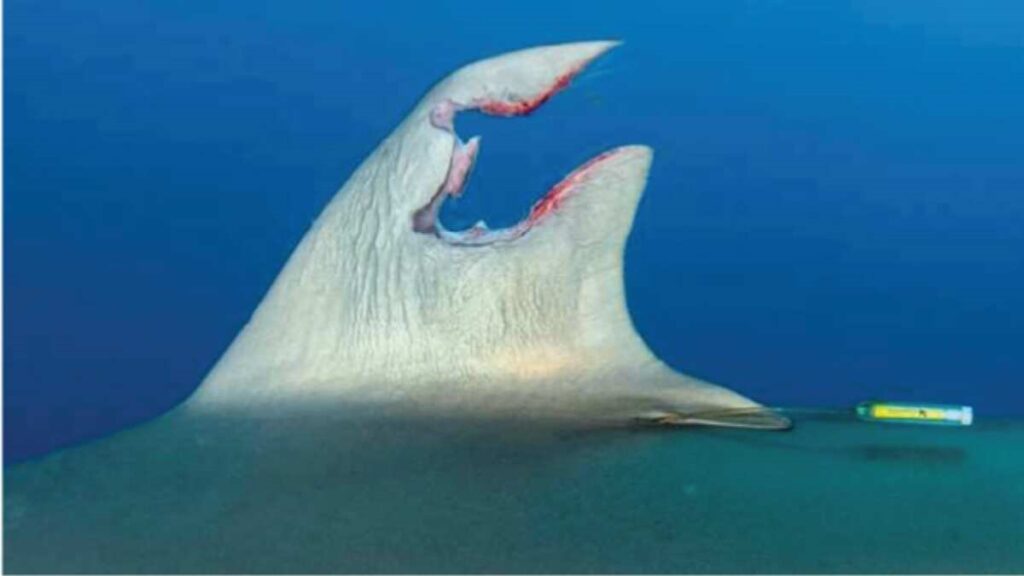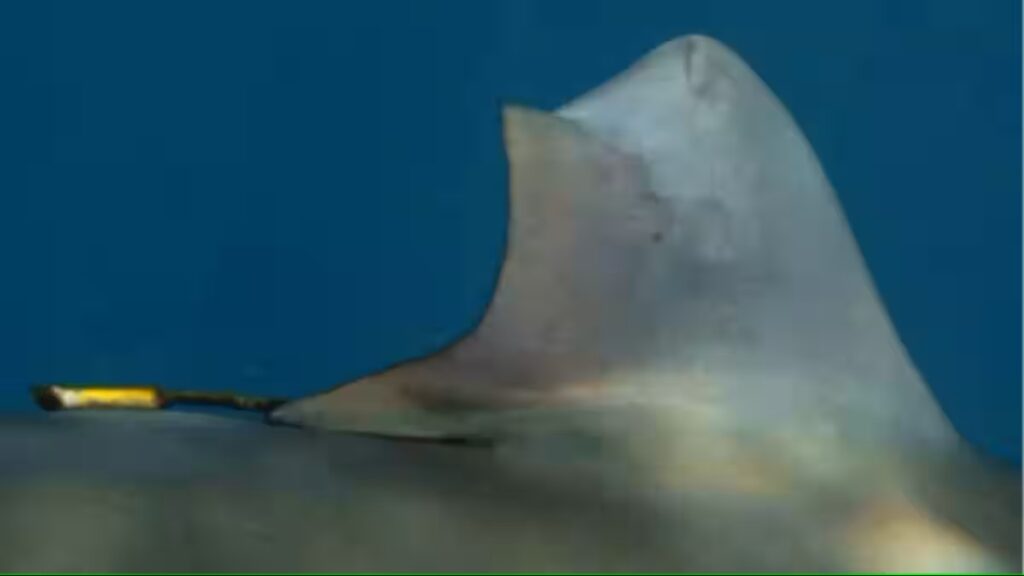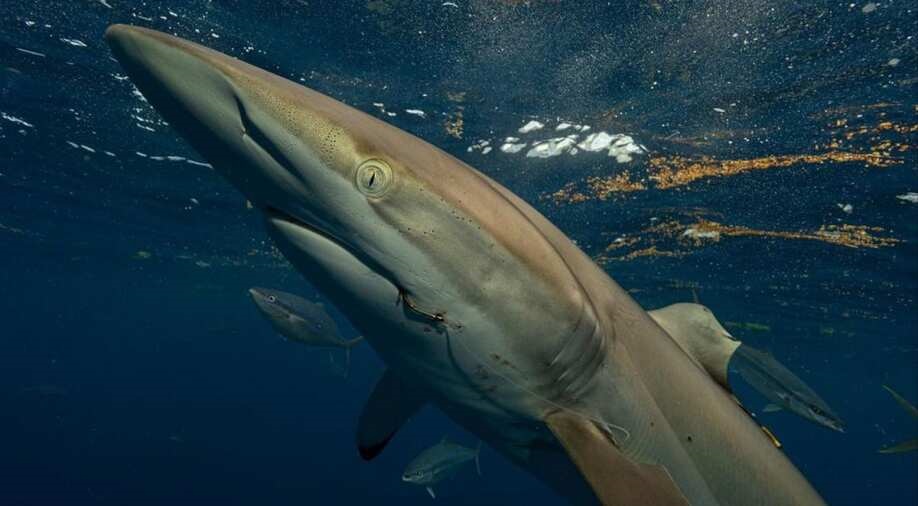To trace a shark’s movement, scientists tagged its dorsal fin with a satellite tag in June 2022.
Researchers have discovered that a silky shark (Carcharhinus falciformis), off the coast of Florida, regrew a portion of its fin a year after sustaining a catastrophic damage in a “shocking” incident. The Journal of Marine Sciences released the research on the shark’s purported super-healing powers.
What took place?
To trace a shark’s movement, scientists tagged its dorsal fin with a satellite tag in June 2022.
But about a month later, a local diver saw the shark’s tag and around 20 percent of the entire appendage gone, alerting the researchers. The diver was Chelsea Black, a PhD candidate and marine scientist at the University of Miami, who is the study’s author.

According to the study, it is hypothesized that the silky shark either got entangled in a fishing net or that people purposefully removed the tag using a sharp item. Black emailed LiveScience to say that she doubts the person who did this with the intention of helping the shark, even though the motives are still unknown.
She added that the shark’s serious injuries and the fact that there was no means to monitor it made her assume not to see it again. The diver subsequently emailed her an image “showing the huge hole of where a tag had been.”
To her utter amazement, however, the shark appeared 332 days later and appeared extremely well-groomed. The study’s author told LiveScience, “It was shocking.” “My initial thought was relief that the shark was alive, as that was a severe wound that could impair his swimming ability or cause a serious infection,” the speaker continued.
Fin repair
Although shark fin mending is very common, the study found that it is rarely complete. In this instance, the study found that the silky shark recovered almost 87% of its fin and was observed swimming properly.

However, the report notes that this is only the second instance of dorsal fin regeneration in any shark and the first time scientists have seen a silky shark regenerate its fin. This makes the episode noteworthy.
Images of a shark with an unusually shaped dorsal fin taken by divers in the same location were given to Black for identification. Based on the tag ID number, Black later verified that the shark was indeed the same one that had been hurt a year earlier.
The researchers have noticed that the new fin has a slightly different coloring, but they are unable to identify if this amazing healing process is the result of new tissue, scar tissue growth, or fusion of the wound bordering portions.
Although no one has ever dissected a regenerated shark fin, the marine researcher speculates that the new fin may consist primarily of scar tissue.
Black stated, “Although the injury incident is still heartbreaking, the result has given an incredible opportunity to study the healing and regenerative abilities of silky sharks following both natural and human-induced injury.”



